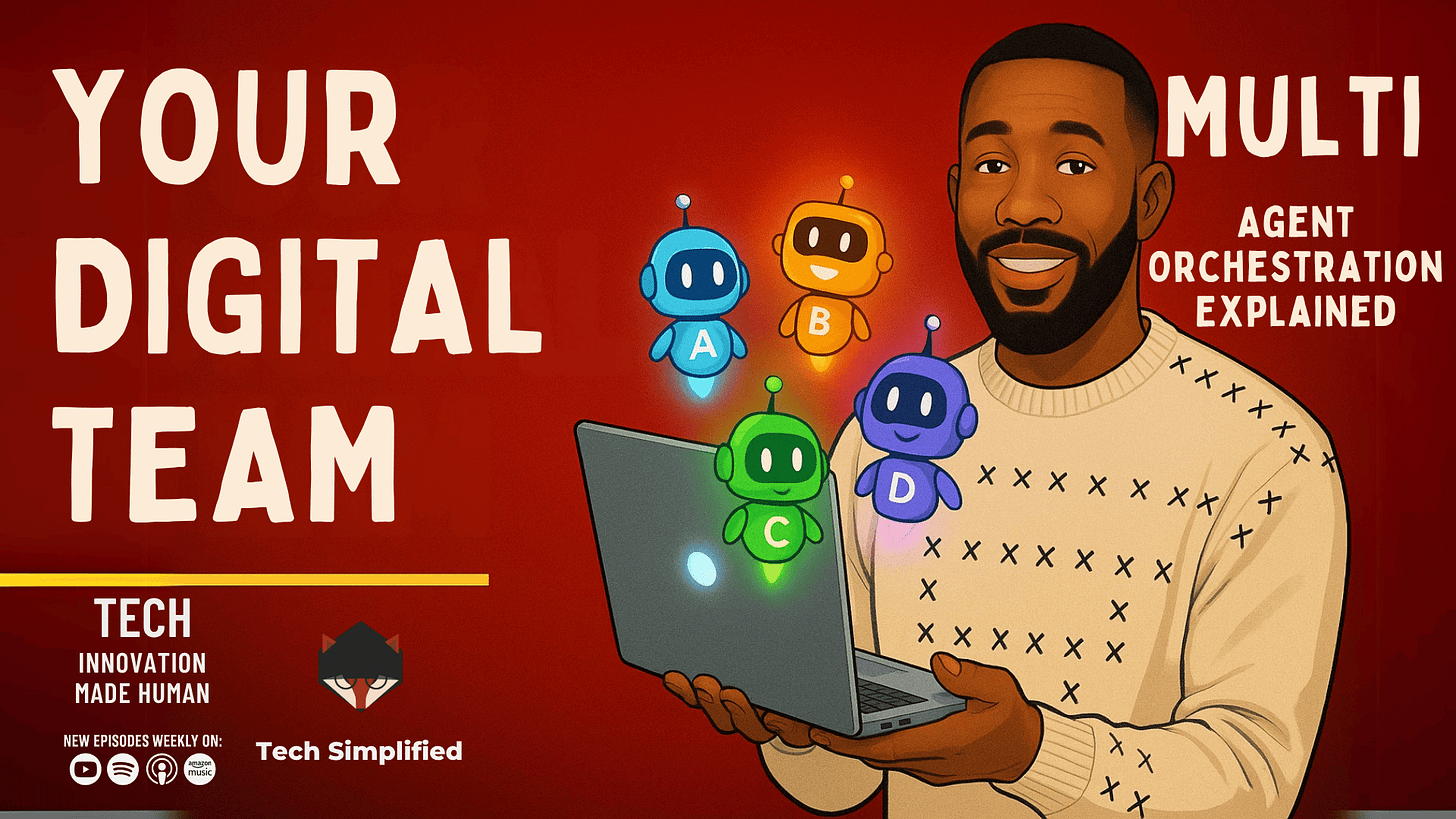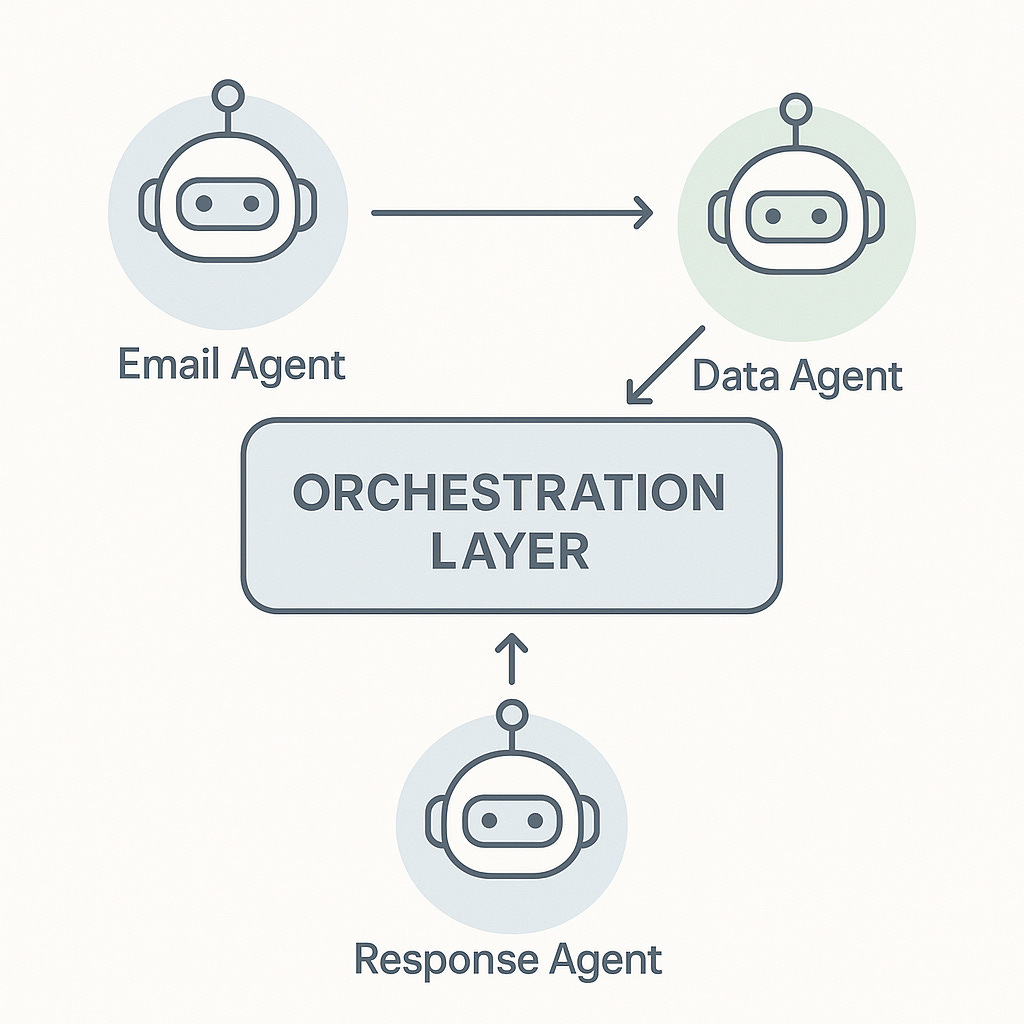Multi-Agent Orchestration: What It Actually Means for Your Work
Breaking down Microsoft's Build 2025 announcement with examples and actionable steps.
Multi-Agent Orchestration: What It Actually Means for Your Work
Breaking down Microsoft's Build 2025 announcement with real examples and actionable steps
Hey family,
Jeremy here. At Microsoft Build 2025, among all the announcements, one stood out to me for its practical potential: Multi-Agent Orchestration in Copilot Studio.
If you've been following AI developments, you've probably heard about AI agents. But multi-agent orchestration takes it further - it's about multiple AI agents working together, each handling different tasks while coordinating automatically.
📺 Watch the full breakdown: I dive deeper into this with visual demonstrations in this week's Tech Innovation Made Human episode
🎧 Prefer audio? Listen on Spotify
Let me break down what this actually means with some hypothetical but realistic examples...
What Multi-Agent Orchestration Really Does
Think of it this way: Instead of one AI assistant that you prompt for everything, you can now have specialized agents that:
Handle different types of tasks
Share information with each other
Work in parallel (not waiting in line)
Coordinate without your constant input
It's like having a small team where each member has their specialty, and they know how to work together.
Hypothetical Example 1: A Small Business Owner's Daily Operations
Let's imagine Marcus, who runs a streetwear brand. Here's how multi-agent orchestration could transform his workflow:
Current Reality for Many Small Business Owners:
Morning: Checking messages across multiple platforms
Midday: Updating inventory and order management
Afternoon: Customer service and content creation
Evening: Administrative tasks and planning
With Multi-Agent Orchestration:
You could set up agents like:
Communications Agent: Monitors and categorizes all incoming messages
Inventory Agent: Syncs with your e-commerce platform for real-time stock data
Response Agent: Drafts replies based on your communication style
Analytics Agent: Tracks what content and products perform best
The key is they work together. When a customer asks about a product, the system automatically checks inventory, crafts an appropriate response, and logs the interaction for future insights.
Realistic Impact: Could reduce time on routine tasks by 40-50%, allowing more focus on creative and strategic work.
Hypothetical Example 2: Corporate Account Management
Consider Sarah, managing multiple client accounts. Here's a realistic scenario:
Common Challenges:
Keeping CRM data current
Tracking renewal dates and opportunities
Preparing for client calls
Maintaining consistent communication
Multi-Agent Setup Could Include:
Data Agent: Automatically updates CRM from emails and meetings
Insights Agent: Monitors account health and opportunities
Prep Agent: Creates briefings before client interactions
Follow-up Agent: Ensures timely communication
Practical Outcome: Better client relationships through consistent follow-up and more time for strategic planning.
Want to see these concepts in action? Watch me break down the technical details with live demonstrations in the full video episode.
Getting Started: A Realistic Approach
Here's how to actually implement this:
1. Access the Tools
Copilot Studio now includes multi-agent capabilities
Available at Microsoft Copilot Studio
Requires some learning but designed for low-code implementation
2. Start with One Workflow
Pick your most repetitive task
Map out the steps involved
Build a single agent first
Test and refine before adding more
3. Gradually Build Your System
Add agents one at a time
Focus on clear handoffs between agents
Monitor what's working and adjust
4. Realistic Expectations
Setup takes time and iteration
Not everything needs to be automated
Human oversight remains important
The Practical Impact
Multi-agent orchestration represents an evolution in how we work with AI. Instead of asking "What can AI do?", we're now asking "How can AI agents work together to handle complex workflows?"
The real value isn't in replacing human work - it's in handling the repetitive tasks that eat up time, allowing people to focus on creative, strategic, and relationship-building activities.
For small businesses, this could level the playing field by providing operational capabilities previously only available to larger organizations. For enterprises, it's about scaling efficiency while maintaining quality.
Next Steps
If this sounds relevant to your work:
Explore the documentation: Microsoft's Copilot Studio guides
Watch the implementation walkthrough: Full episode on YouTube
Identify one workflow that could benefit from automation
Start small with a pilot project
Share your experience - what works, what doesn't
Question for you: What repetitive task takes up the most time in your week? Hit reply and let me know - I'm collecting real-world use cases for future content.
Best,
Jeremy
P.S. For a deeper dive with visual demonstrations, check out this week's Tech Innovation Made Human episode on YouTube or Spotify.
P.P.S. Remember: Tech is but a tool, but YOU are the secret sauce. ✊🏾
Quick Links:



